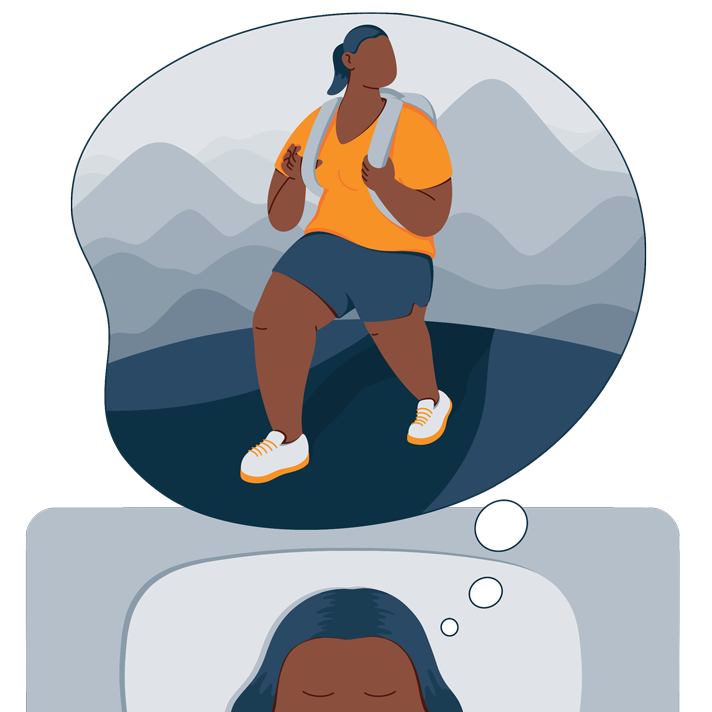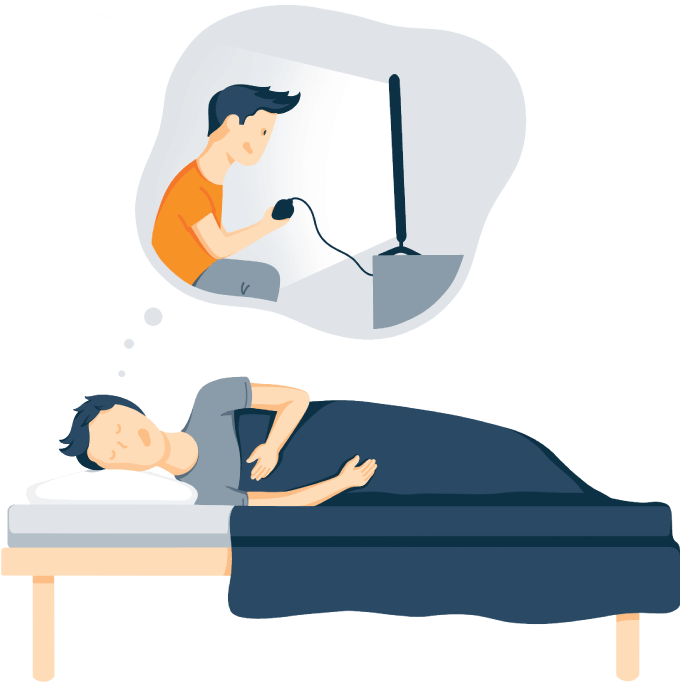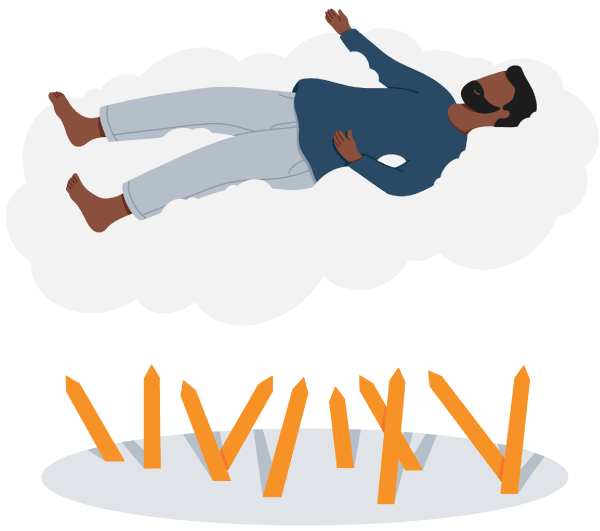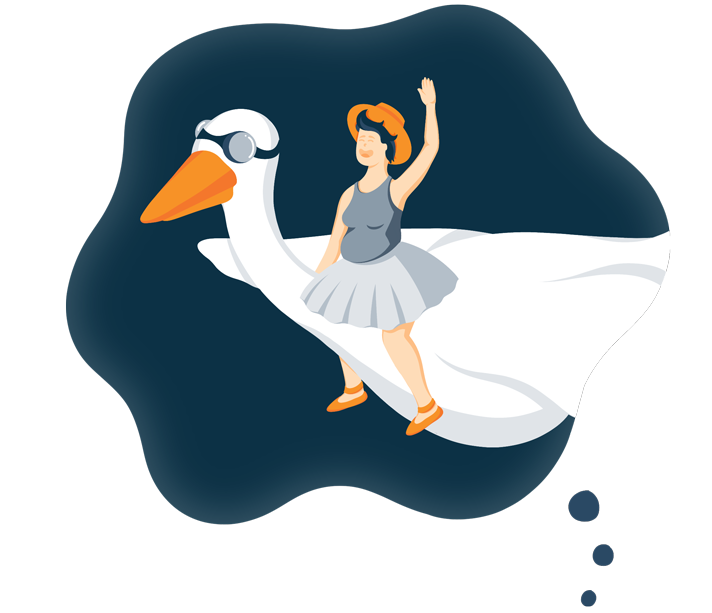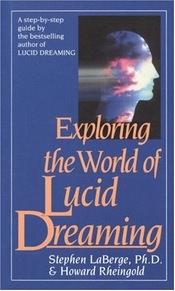How to lucid dream
How to lucid dream
HOW TO LUCID DREAM FAST If You’ve Never Done It Before!
So, this is actually the best way I can think of explaining how to lucid dream to someone who’s never done it before. This guide is NOT how to lucid dream in DETAIL, it’s how to get started and have a lucid dream really fast.
So there will be some details missing here, things that need more explaining for example. There will also be lots of things here that really only make sense if you’re trying to lucid dream fast. Because let’s face it, the chances are you just want to get started, and have a lucid dream tonight.
If that’s the case, then read on because I have a lot of tips to share with you. I get lots of emails from people like you, asking how to lucid dream in one night, and most of the time I have to say it’s not possible.
But that’s not entirely true. It IS possible to lucid dream in one night, and it IS possible to have your first lucid dream fast, even tonight after just reading this article. But there are a few things you’ll need to do, and it won’t work for EVERYONE.
What you’re really doing is just trying to ‘trick’ your brain into staying awake or becoming awake while your body, is still fast asleep.
This usually takes a bit of practice, but we’re going to try and skip the practice for now and just focus on the methods that work.
Table of Contents
What you’ll need
Now, those things are pretty much the bog standard things you’ll need to have your first lucid dream.
If you don’t have access to the binaural beats, or you just can’t spend any money on things like that right now, then ignore that step of the process.
How to lucid dream fast
So as we’ve said this is focused on speed. Normally when you learn how to lucid dream you’d focus on building up several habits that will ultimately let you have random lucid dreams. You’re not going to focus on those habits now. This is about just experiencing your first lucid dream as fast as possible.
Now I didn’t say it was going to be fun, and you’ll end up feeling very tired the following day after doing this. That’s because this method if you can even call it that is just the fastest way I know how to lucid dream in one night.
It’s NOT what I’d suggest you do long term, or even more than once or twice. This is going to disrupt and ruin your sleep and for the next day you’ll feel pretty rough as a result.
BUT hopefully, you’ll have had your first lucid dream which if you’ve never had one, you’re in for a shock.
It’s going to feel AMAZING and you’ll be addicted from now on. I’m not saying this will work for everyone, but it’s pretty likely that it’s going to work.
1: Construct a lucid dreaming room
Your actual physical room is really important for lucid dreaming, and you’re going to want to make it a ‘lucid dreaming cave’. This means setting it up in the right way. To start with, get some lavender pillow spray and put it on the inside of your pillows to make them smell nice.
This not only relaxes you but also promotes better sleep, and yes, it really works. I’ve tried pillow sprays, and I was skeptical at first. There are lots of things I’ve tried to help me lucid dream more or better, and pillow sprays are one of the ones that worked.
They’re really cheap as well and the one I usually use is this particular Lavender scented spray. I find it lasts longer than some of the others and relaxes me better.
You might also want to get a nice memory foam pillow like this one, if you have a bit more time to do some shopping!
Now make sure your room has ALL the light blocked out. You don’t want any light to be sing into the room when you’re trying to go to sleep and that includes things like LED lights from chargers or TV screens.
Make sure it’s all blocked out and you can use black electrical tape if you have to. You don’t want to have ANY light sources in your room.
I actually went the extra mile for this one and fully blocked out the light from the door and windows in my room (using a combination of blinds AND blackout curtains) so that it’s a dark lucid dreaming palace.
And now make sure there’s no SOUND in the bedroom. This means turn things like computers or devices OFF. There is a small humming noise that most devices and screens make when they’re use sleeping as opposed to off. You don’t want that humming noise, so turn all of your devices off.
It also helps if your room is soundproof and there’s no sound coming from outside, but you can’t always control that, so we’ll leave it at that for now.
Finally make sure you’ve got a dream journal at the foot of your bed or next to where you can easily reach it. This needs to be a small, easily grabbed notebook or notepad that you can write on with a pen. Keep it by the side of your bed, and if you need to, keep a SMALL dim light by it as well.
You’re going to be writing in it in pitch black potentially, so make sure you’ve got a writing option that means you can see what you’re writing.
For me, I use a dim reading lamp or the light from my kindle or something like that. This means I have control over how bright the light is.
And that’s really key for the techniques later and having your lucid dreams. You really don’t want too much light to enter your eyes at that time of the morning.
The goal here is to be able to write down some dreams and then go BACK to bed and have more lucid dreams. It’s known as dream chaining and it will allow you to have multiple lucid dreams in the same morning.
But you can only do that if you’ve got a dim light for writing in your dream journal, otherwise you’ll just wake yourself up too much by turning the light on. Now, your room’s ready:
2: Embed reality checks in your brain
You know that reality checks are important. For those who don’t know what they are, a reality check is where you test whether you’re dreaming or awake. You can do one right now:
Hold your hands out in front of you. Now push the finger of one hand into the PALM of your other hand. As you do this, EXPECT it to go through your palm. Really push it as if it’s going to go through your hand, and at the same time ask yourself ‘Am I dreaming?’.
By leveraging your critical thinking at the same time as doing a physical action like that, you trick your brain. Your brain ‘links’ the action with the question in your mind.
This means that later, when you are DREAMING about doing that weird thing with your palms, you’ll actually remember to ask yourself ‘Am I dreaming?’.
And if you ask yourself that WHILE you’re actually dreaming, you become lucid. It’s going to feel like you’ve just been ‘snapped’ awake in the dream, and suddenly you can do anything you want. It all feels very real and vivid, and there’s really nothing you can’t experience in this lucid state.
It not only feels real, but you’ll have a beautiful memory of it when you wake up as well. It’s a beautiful thing, and it’s no wonder lots of people get almost addicted to this lucid dreaming state. I know I did for a while and It was all I could think about!
So that’s an example of a reality check you can do. Do those ‘reality checks’ lots of times during the day, as many as you can remember to do. I actually have a lucid dreaming app that helps you remember to do them if you have an Iphone.
3: Visualise amazing things
This parts a little different to most lucid dreaming techniques. You’re going to try and ‘motivate’ and inspire your dreaming mind. By watching inspiring or awesome things you’ll be more likely to dream about them later.
You want to dream about these awesome things, and then have a lucid dream about them.
Find lots of YouTube videos that REALLY inspire you and make you want to go out and live life to the max.
For me, this means travel videos and clips. I actually have created a lot of travel videos on my other channel, like the one below if you also like travel videos:
So watch things like that and get inspired. Try and imagine what it would be like to travel to those places (or do whatever it is that inspires you) and try and feel it in your minds eye. This will really help you alter because you’ll probably dream about those things you’ve watched.
4: Set alarms to interrupt your sleep many, many times
This is a key part of this whole method. To lucid dream fast you’re going to really need to hack your sleep up. This means interrupting your sleeping pattern several times during the night.
There have been many lucid dreaming devices or masks that can do this, but the real key is just to stick to what works.
Sound and light works to interrupt your sleep, dance why people use those things for alarm clocks and tones. Just set a few alarms on your phone, to go off every 15 minutes from about 4AM until 9AM.
Now that means setting a good 20 or more alarms (spaced 10-20 minutes apart, mix it up a bit). In fact, don’t space them out equally, have some that last longer than others. For example have some alarms that go off every ten minutes, and then the next one goes off after 16 minutes. Mix it up so your brain doesn’t get used to the timings.
What these alarms are going to do, is to interrupt your sleep and wake your up at various sleep stages. The goal is to interrupt your dreaming mind during what’s known as ‘REM’ sleep. This means rapid eye movement sleep, and it’s when you dream (and lucid dream).
By waking your mind up or interrupting it during this time, you’re much more likely to lucid dream. This is why I’ve chosen the interruption method as the best way to lucid dream fast, because it works so reliably.
Using binaural beats (optional bonus step)
Binaural beats are a special type of sound wave that you can listen to while trying to lucid dream. They ONLY work when played through stereo headphones or sleep phones like these. They really do work very well, and I’ve tried lots of binaural beats companies to see what’s the best one.
The best ones I’ve found that work for lucid dreaming are:
So, what you’ll need to do is choose a binaural beats package that says something like ‘sleep’ or lucid dreaming. Buy and download it, and then put it on your Ipod or phone.
Make sure your headphones are stereo and then play the track when you hear your FIRST alarm go off in the morning.
As I said you don’t have to do this at all, and you can lucid dream fast without this, but they help. By listening to binaural beats while you’re going back to sleep after hearing your alarm, you train your mind to become lucid. It makes it more likely.
This is because your brainwaves are in one of several ‘brainwave states’ at any given time. By listening to a binaural beat track you can sort of ‘guide’ your brain into certain states more easily.
Combine this with how tired and suggestible you are that early in the morning, and you’re very likely to have a fast lucid dream.
5: Have a lucid dream!
So this is the fun stage. At some point during the alarms (probably after the 3rd or 4th alarm has gone off) you’ll notice that you’re lucid dreaming. You might even remember to do a reality check while you’re in the dream, but maybe not. At the VERY LEAST, you’ll have an intense, vivid dream that you’ll remember.
This is a great starting point so don’t worry if you’re not actually lucid yet. By having more intense dreams, you’re one step closer to becoming lucid. So like I said, at this point you’re likely to have had one or more lucid dreams.
They’ll feel like intense, vivid dreams that you’re AWAKE inside. Sort of like waking up in a new alien world where you’re god and you can decide what to do, where to go and what to experience.
At this point you can do whatever you want. You’re free!
One of the most annoying things about starting to lucid dream is that it doesn’t tend to last very long. Much like learning any skill, you can improve. There are a few things you can do to increase your dream LENGTH.
Firstly, just try spinning round on the spot, while thinking to yourself ‘increase lucidity’. This is known as a dream command and it can help you work WITH your subconscious mind to increase your lucid dreaming stability.
6: Write your dreams down!
Now when you wake up after your first lucid dream, you’re going to want to write it down! This is really key to your success, so make sure to write down all the details you can remember in your dream journal.
The reason we keep dream journals is because we really need to be able to look back and see what days we were lucid, and why. This helps you work out which techniques worked for you, and which ones didn’t.
Because everyone’s different, certain techniques will work for you, while others will not. You should find out what these are, so you can focus on what works.
A dream journal is a great way of doing that, and you can also look back and see the dreams you’ve had on other nights, and what your dream signs were.
How to have more lucid dreams after that one
After your first lucid dream, the chances are you’re going to want to have MORE lucid dreams. I know when I first started, I was obsessed with this idea. I just wanted more and more lucid dreams, every single night.
You’ll eventually get to a point where you’re not craving as many lucid dreams, but for a beginner, you certainly want more. So there are actually a few things you can do to have more lucid dreams. Here’s a summary:
Now hopefully all of that worked, and you’re on your way to becoming a master lucid dreamer. If it didn’t work, the chances are you either didn’t do a step right, or you ONLY did one step. For this to work tonight and fast, you really need to follow all of the steps.
The binaural beats as I said are optional, but they’ll really make a difference for you if nothing else is working. what you could also try is some lucid supplements like Claridream PRO (Although that doesn’t induce lucid dreams directly).
There are lots of supplements that can help you lucid dream actually, I’d suggest starting with Dream Leaf.
Further reading
If you’re interested in learning more about lucid dreaming and want to learn more tips and tricks, here are some posts you’ll like:
This was written by Stefan Zugor (Read his story), a long time lucid dreamer, creator of HowToLucid, digital nomad and adventurer. He’s aiming to help the world become more conscious. Lucid Dream In 30 Days And Experience Your Fantasies: Watch My FREE Video Training and get started tonight. If you’ve TRIED to lucid dream before, but nothing has worked for you, try the new Lucid Breakthrough Program
How to Lucid Dream – Tips and Techniques to Try
Imagine being able to control your dreams while you sleep. You can try every food on the planet free of charge, travel the world, hang out with celebrities or lost loved ones, and maybe even have an existential conversation with your dog. All of this is possible once you learn how to lucid dream.
In this article, we’ll share proven tips on how to induce lucid dreams. While it is a skill that you’ll get better at over time, we’ve got some tricks that can help you have a conscious dream as early as tonight!
What is Lucid Dreaming?
A lucid dream is a conscious dream. When you’re in this state, you can control yourself in a dream and explore a whole new world. The amount of control you are able to exert during lucid dreaming varies, but at minimum, you’ll be walking through a world painted by your subconscious mind totally aware that you are in a dream.
There are two types of lucid dreams:
The Benefits of Lucid Dreaming
Choose Your Dream
You are no longer bound by nonsensical dreams about seemingly random occurrences throughout your day. Instead, you choose what visions you want to see when you go to sleep. Our subconscious is a powerful system, so even if you’ve never been to Paris, you’d be surprised by the level of detail your mind will create.
Creativity
The only limit with lucid dreaming is your imagination. When your conscious and subconscious minds work together to create a new land, you’ll be amazed at what you can do. Maybe you’ll even think of a remarkable, life-saving invention.
Reunite with Lost Loved Ones
If you’ve lost a loved one and are missing them terribly, you may find comfort in meeting them in a dream and having a conversation that you’ll be an active part of rather than a mere observer. Many of us have had fleeting dreams of people we love before.
The conversations don’t often make sense, and we feel helpless when we wake up, wondering why we talked to them about emptying the dishwasher when we could have had a much more stimulating conversation.
Remove Fears
This is an ideal time to confront your fears because there are no consequences. Nothing can hurt you during a dream. If you’re afraid of heights, have a dream about skydiving! If public speaking makes you break out in sweats, create a reality where you give a speech that receives a standing ovation.
Communicate with Your Subconscious
Our subconscious mind is more powerful than our conscious one, and its programs are always running in the background. If you have patterns of addiction or self-sabotage that you’ve tried to break with no success, that’s your subconscious at work. During a lucid dream, you can communicate with your subconscious and possibly reprogram it!
Improve Motor Skills
If you want to get better at something, like playing a musical instrument, dreaming about the activity is an effortless way to “practice” and improve. By lucid dreaming about the skill you’d like to learn, you’ll find that you master it much faster if you incorporate practice time into your dreams.
Better Sleep
Instead of being awakened by dreams you aren’t prepared for, being in a lucid state means you can enjoy them fully without waking up. Fewer interruptions translate to a better night of sleep.
Inspiration
Your subconscious mind is like a giant database of everything you’ve experienced, whether you remember it or not. You may not have even been aware of what’s gone on around you, but your subconscious keeps track and logs that information.
If you’re in a creative field and struggling for inspiration, a lucid dream may be just what you need to spark the imagination and synthesize ideas you already had in your subconscious.
No Nightmares
If you’re being chased by a fire-breathing dragon, you no longer have to play the role of the victim. Instead, conjure up your sword, turn around bravely, and slay that dragon.
No matter how horrific a nightmare you’re having, once you master the art of lucid dreaming, you’ll be able to control the situation or at least find comfort in knowing that nothing can hurt you.
Lucid Dreaming Induction Techniques
Learn about Lucid Dreams
The first step is to learn everything you can about how to lucid dream. Fortunately, you’re in the right place, as this article has everything you need to get started.
Reality Testing
As you’re learning how to lucid dream, start with 25 reality tests each day, and you can decrease them as you get better at this skill. Here’s one to try:
The purpose of a reality checks is to perform a simple action that proves you’re awake. The outcome of the action will be different whether you’re awake or asleep. By repeating this action multiple times each day, it becomes a habit that your dreaming mind will pick up. Then when your body does this task in a lucid dreaming state, you’ll be primed to pick up on the fact that you’re asleep.
Turn off All Screens
At least one hour before bed, turn off all electronic devices with lit screens. Your bedroom must be as dark as possible to encourage sleep by encouraging melatonin production, the hormone that helps you sleep. Since light interrupts melatonin production, it’s important to keep your environment dark.
Set an Alarm
Set an alarm for five hours after you go to sleep. Ideally, the alarm should go off between 4 AM and 6 AM.
The idea is that the alarm will wake you during REM sleep, and you’ll fall asleep right back. You’ll use the techniques in the next steps to make sure that you enter a lucid dreaming state.
Two things to note on this step to ensure success:
Wake up with Your Eyes Closed
Even though you’re waking up for a moment, keep your eyes closed. You’re preparing your body to go back to sleep even though your mind will still be semi-awake and active.
Perform a “WBTB”
The abbreviation is short for “wake back to bed.” As you wake up from a deep sleep, you’ll be training your body to fall back asleep while still keeping your mind alert.
So, now you’ll start to feel your body drift off to sleep. Your body may trick you into revealing your mind is awake by performing a sleep test. The body will send a message to your brain that you need to roll over, touch your stomach, scratch your nose, etc. Resist the urge to move.
Once your body is sure you’re asleep, it will relinquish control, and you’ll begin to see colors, shapes, and even glimpses of scenery. You’re now in a lucid dream.
Additional Tips & Techniques
Meditate
In the last section, we alluded to the separation between mind and body. Meditation, when done correctly, helps you practice this skill.
For example, you’ve seen Buddhist monks meditate for hours on end. They can achieve that because their bodies have gone to sleep, yet their minds are awake. Lucid dreaming is very similar and requires the same skill set.
Interested in more details? Learn how to meditate before sleep.
Listen to Binaural Beats
You might have listened to binaural beats to help you focus, study, and even sleep, but they can also help with lucid dreaming, too. The two frequencies being played at the same time enter each ear individually and are processed by your brain as a single frequency that merges the two.
You can find binaural beat tracks for free on YouTube, or you can purchase an app for more variety. The trick to making these work for lucid dreaming is to match the Hz (frequency) to the appropriate brainwaves to encourage the activity. In this case, you want Theta waves, which are between 4Hz and 8Hz.
Play Video Games
When you play video games, you immerse yourself in a new world and can explore the edges of this new universe. Push yourself to explore new lands while you’re in play mode, and you’ll be more primed to do it while you’re sleeping.
Take Galantamine
Galantamine is a natural supplement often recommended to Alzheimer’s patients to improve brain activity and memory function. The substance is commonly found in plants like dandelions, and it’s commercially extracted for oral use from flowers like the spider lily.
Studies have shown this supplement is helpful in lengthening REM (rapid eye movement) sleep and encouraging sleep recall. In this particular study, the likelihood of a lucid experience was 5.8 times higher than when the participant took a placebo.
Take Vitamin B Supplements
Vitamin B6 is associated with lucid dreaming. The link between ingesting this vitamin and entering a conscious dream hasn’t been fully developed yet, but this study suggests that the increase in serotonin levels from this supplement makes nightly visions more vivid and colorful.
Frequently Asked Questions
Are there dangers with lucid dreaming?
While you won’t be in any physical danger, you may need to prepare yourself for feeling new emotions and having experiences that aren’t familiar.
Can beginners achieve a lucid state?
Like anything, practice makes perfect. However, many people experience their first lucid dream within the first few nights of trying the techniques mentioned in this article.
What is a lucid nightmare?
A lucid nightmare is the unpleasant version of a lucid dream. The good news is that since you are aware of the situation, you can take a more active role in the situation and confront whatever is causing the nightmare.
Sleep Advisor
Our team covers as many areas of expertise as we do time zones, but none of us started here as a so-called expert on sleep. What we do share is a willingness to ask questions (lots of them), seek experts, and dig deep into conventional wisdom to see if maybe there might be a better path towards healthy living. We apply what we learn not only to our company culture, but also how we deliver information to our over 12.7M readers.
Sleep research is changing all the time, and we are 100% dedicated to keeping up with breakthroughs and innovations. You live better if you sleep better. Whatever has brought you here, we wish you luck on your journey towards better rest.
Leg Cramps at Night: Causes and Prevention
Mouth Taping for Sleep: Sleeping Better with Mouth Taping
How Can Magnesium Help You Sleep?
Can You Take Melatonin While Pregnant?
Numbness in Hands While Sleeping: Causes and Treatment
Transparency Disclosure – We may receive a referral fee (at no additional cost to the buyer) for products purchased through the links on our site or other applicable pages. To learn more, please read our full disclosure page here. We also encourage you to read about how we may research and/or test Products here.
There’s no one-size-fits-all when it comes to better health and better rest, but no one has time to sleep, let alone figure out how to upgrade the sleep they’re getting.
From figuring out how to buy a mattress online, suggesting ones that are good for different needs and body types, or breaking down the newest science behind technology and wellness breakthroughs, Sleep Advisor has you covered.
How to Lucid Dream: The Complete Guide for Beginners
Did you know you can control your dreams? If not, now is the time to learn how to lucid dream and experience a new realm of your reality.
One undeniably mysterious part of our psyche is the dimension of our dreams. And when you discover how to lucid dream, you will reach an exciting new level of exploration in your reality.
Lucid dreaming is a safe space within your being where it’s possible to live the experiences you’ve always dreamed of. Literally.
This article is inspired by the one and only Charlie Morley, a globally celebrated lucid dreaming teacher. Teaching how to lucid dream in some of the greatest institutions of the world, Charlie has partnered up with Mindvalley to share his knowledge in the unique Experience Lucid Dreaming quest.
If you want to discover what lucid dreaming really is all about, read on to uncover:
Any Aerosmith fans out there? Let’s dream on.
What Is Lucid Dreaming?
Simply put, lucid dreaming is being lucid, a.k.a. fully aware, during a dream. The term ‘lucidity’ is defined as clearness of thought and is often linked to the capacity to see the real truth of your current experience.
This makes it very exciting to experiment with.
Imagine a world where you could conquer your biggest fears, travel to any location on the planet, and live out awesome adventures and fantasies.
You can experience this new realm actively or passively. The most popular type of lucid dreaming involves active participation where you create and control your dreams, which is what will be covered in this article.
A great, very simple way to discover if you’ve ended up in a lucid dream is to ask yourself if you’re in one.
Think of it like this. Are you aware right now? Are you conscious?
If the answer is yes, then you are lucid as you read these words. If you can ask yourself a similar question whilst in a dream, and answer it, then you’ve accomplished your goal.
You are one with everything in a lucid dream and everything in the dream is you.
— Charlie Morley, trainer of Mindvalley’s Experience Lucid Dreaming Quest
What does lucid dreaming feel like?
How do you feel when you see a sunrise? Hear your favorite song? Smell a rose? Eat your mom’s famous pot roast? Pet your dog?
Now, imagine those feelings amplified. That is what it feels like.
Even though you’re aware that you’re in a dream state, it’s often extremely vivid and feels very real.
Everything is heightened, including your five senses – sight, sound, smell, taste, and touch. Your emotions can feel more intense than what they normally feel like in the real world.
While you can feel a greater sense of joy, love, and all things wonderful, bear in mind that you can feel a greater sense of the negative ones too. So take care of how you plan your dreams. So take care of how you plan your dreams by learning how to lucid dream.
Lucid dreaming is essentially a reality you create, where you can sense and feel everything around you within the safe construct of your mind.
What can you do in a lucid dream?
Anything you like! But if you’re strapped for ideas, here are some for your next plan:
How to Lucid Dream in Four Simple Steps
If you want to learn how to control your dreams, you should start with these four methods. It will take a little practice, though.
If it were just as simple as going to sleep and remembering that you’re not awake, there wouldn’t be an ever-growing collection of masterclasses, courses, and blogs covering all the varying techniques out there, of which there are many.
That said, this is possible for anyone and everyone. To get started, follow our four favorite tips to make sure you regain or maintain awareness as you enter REM sleep. They really do work, so give them a shot and perhaps discover how to lucid dream tonight.
Step #1: The reality testing technique
Reality testing, also known as reality checking, is an effective type of mental training to build lucid dreamer muscles. It increases metacognition (the ability to think or notice one’s thinking) by slowly but surely training your mind to notice your awareness.
Metacognition is similar to the concept of mindfulness and meditation…but with an interdimensional lucid twist.
Reality checks increase lucidity because the more developed your metacognitive skills are when you’re awake, the more developed your metacognitive skills will be when you’re dreaming.
When you do a reality check very often during the day, your subconscious will program the awareness practice in the mind. When reality testing becomes a subconscious habit, you will better be able to do reality checks and spot dream signs during your dream.
For example, in The Matrix, looking at a spoon is Neo’s reality check. He says, “There is no spoon” and watches it melt. That way, he roots into his lucid awareness and knows he’s in the Matrix (equivalent to dreaming).
For this step, Charlie recommends doing The Weird Technique in your waking state to achieve lucidity during the night. The way it works is acknowledging every time something weird happens around you and asking yourself “Am I dreaming?”
Then look at your hand twice in a row and become aware of its details. A bit weird, right? This exercise aims to practice becoming aware in your real life, so your brain gets the momentum of lucidity in your dreams.
Step #2: Keep a dream journal
Make an effort to wake up in the morning to instantly write down everything you can remember about your dreams. Among the benefits of doing so is lucid dreaming facilitation.
The more attention you give to your dreams, the more you train your brain to recognize them as very important. Thus, you will start to remember your dreams better which means your dream lucidity will increase.
Having a dream journal will also help you to recognize repeating patterns in your dreams. When you are aware of these patterns, you will also be able to recognize them faster and easier during a dream.
Instead of opting for your phone, write in a notebook that you keep by your bed. That’s because the act of turning on your phone, finding the notes section, and looking for the letters on your screen can pull you out of the post-dream state too much, consequently making you forget the details of a dream.
If you remember a lot of it, write down the key details first and then flesh out those details as much as possible. Stretch yourself. It’s important to write down as much information as you can before your mind awakens completely.
Step #3: The ‘Wake Back to Bed’ technique
The intention behind using the ‘Wake Back to Bed’ (WBTB) technique is to enter REM sleep while you’re still kind of conscious. This makes it way easier for you to control your dreams.
There are five steps to the WBTB hack:
Step #4: Create a dream plan
If you’d like, you can use the same dream journal from Step 2 for this step too. This time, the idea is to write down what you want to dream about before you go to sleep.
Start the entry by stating, “In my next lucid dream, I will…” and describe what will happen, how it will feel, and how exactly it will end.
The intention you set before you close your eyes will leave a subtle imprint on your subconscious mind, making it way more likely that you will achieve whatever you want to achieve whilst lucid dreaming.
There are a whole host of exciting things you can do here, and your imagination is your limit. Many people meditate to tune into their intuition and ask what may most serve them personally in this kind of experience.
Astral projection vs. lucid dreaming
The key difference between astral projection and lucid dreaming is how you reach each state.
While lucid dreaming occurs when the conscious mind is activated during your sleep, astral projection is an out-of-body experience that can occur while you’re awake.
One main thing to understand about astral projection is that, according to legend, advanced astral travelers can venture into other worlds and spiritual realms.
Exploring astral projection and playing around with out-of-body experiences can be super fun and mind-opening, but mastering how to lucid dream is more for beginners. We wouldn’t want you floating off into another dimension without the right training first.
Benefits of Lucid Dreaming
Apart from being incredibly fun, when you learn how to have a lucid dream, you’ll get some awesome advantages. Here are Mindvalley’s top four proven benefits:
#1: Deep healing
The official European Science Foundation Gathering of 2009 concluded that lucid dreaming is no doubt a powerful tool for treating neurological and psychiatric disorders.
As trauma often manifests in the dream state as well as the waking state, lucid dreaming may act as one of the most empowering interventions possible when it comes to healing.
During this fascinating experience, the prefrontal cortex of the brain which contributes to learning and personality development becomes activated. What’s even more exciting is that neuroplasticity is engaged just like it is in the waking state.
This allows you to rewire your brain while you’re sleeping.
Moreover, studies show that it can be excellent in decreasing the frequency of traumatic nightmares.
Mindvalley’s lucid dreaming expert, Charlie Morley confirms that lucid dreaming is excellent for trauma integration. After having taught hundreds of people suffering from PTSD, from war veterans to child abuse victims, Charlie has seen its potency firsthand.
#2: Subconscious exploration
Lucid dreaming also opens the gateway to the subconscious negative beliefs that are hidden from the conscious mind.
This is exciting because our subconscious beliefs shape our realities through our thoughts, feelings, and behaviors. So just imagine what you could do if you were to see them in front of you in a lucid dream.
Through this dreaming method, you can consciously choose to face your fears or any limiting beliefs so you can transform them. You can even come to understand how they got there in the first place.
A classic example of a subconscious belief-driven fear is suffering from arachnophobia (an irrational fear of spiders and other arachnids such as scorpions).
During a lucid dream, there’s nothing to stop you from calling in a friendly spider, one that’s small and unthreatening to begin the transformational process step by step.
You can even commence a dialogue with it to ask where the origins of your fear lie and how to come to peace with the critters.
Many people end up resolving deep personal issues during lucid dreams without ever having to step foot in a professional hypnotherapy session.
Having taken the quest I realize that becoming lucid is a gift and that taking notice of the dream, listening to the dream’s message and embracing it is very powerful. It has opened my eyes to a completely new and incredibly effective way of healing previous trauma.
— Stella, RTT therapist from France
#3: Learning/practicing exciting skills
Yes, that’s right. You can practice any desired skill in your sleep.
You see, the brain doesn’t know the difference between actively imagining you’re doing something and actually doing it. It’s become really popular to visualize the act of practicing a skill, say, playing the piano. And it works.
But lucid dreaming takes you to the next level. You could find yourself in a complete, moving 3D visualization, one that works naturally and with 100% of efficacy.
And the results are real.
Studies continue to show that discovering how to lucid dream can be used as a great training method for athletes too.
Our expert, Charlie Morley shared with us that in a study carried out by Heidelberg University back in 2019, martial artists were asked to practice a specific kickboxing sequence in their lucid dreams.
Fascinatingly, in the waking state, Charlie disclosed that 81.3% of them actively improved their martial arts practice. So lucid dreaming practices can indeed lead to physical waking state results.
From getting better at creative problem solving to enhanced self-reflection and consciousness, it acts as the ultimate brain gym.
#4: Forge better futures
Charlie also explains that lucid dreaming can be a powerful self-development tool for real-life manifestation.
Within your dream, you are given the space to ask big questions such as:
Listen up because you’ll probably get big answers. In this state, we get access to the whole truth and nothing but the truth, and the information we receive is unfiltered by external pressures.
This is one of the core benefits of lucid dreaming, making friends with ourselves.
— Charlie Morley, trainer of Mindvalley’s Experience Lucid Dreaming Quest
Once you identify what it is you truly want out of life, you can then start to literally live your dreams. If what you want is to become a world-class writer, explore writing a New York Times Bestseller in your dreams.
Allow yourself to feel the feelings of excitement and achievement as your book gets published. This is the Law of Attraction at its finest.
Your subconscious mind doesn’t understand the difference between your dream state and your reality, so what better way to prepare for a better future and actively attract it to you?
Lucid dreaming can give us all the tools we need to resolve our problems, achieve emotional balance, liberate us from the potential prison of the mind, perfect our talents and attract the lives of our…dreams!
Debunking Lucid Dreaming Myths
There are a few myths about lucid dreaming that should be highlighted. A few have subtle elements of truth to them and others are lies. Here are three common myths debunked.
#1: You might never wake up from a lucid dream
What if you can’t wake up from a lucid dream? — it’s the one question that puts most people off attempting a lucid dream. But it’s simply not true.
You can and WILL wake up. And if you happen to experience a slight glitch in the sleep-wake process, it will pass quickly.
#2: Lucid dreaming can be very risky
Are lucid dreams dangerous? Simply put, no.
Lucid dreams may feel dangerous (you may feel doubtful or fearful during a dream) but in reality, you’re perfectly safe. You have nothing to fear. Nobody has ever died or gotten injured during a lucid dream.
Remember, you’re the one in control. Harness the power of your mind–especially if you feel lost or are experiencing any negative emotion.
#3: In a lucid dream, you don’t actually rest
Untrue. Although you might feel like you’re scaling a cliff face, running a marathon, sky diving, or flying, remember: it’s just a dream.
For lucid dreaming to occur in the first place, you must enter into a REM sleep cycle, a deep level of rest, so don’t worry. Your body is going to get all the rest it needs, and lucid dreaming is unlikely to cause any major sleep disruptions.
If you’re keen on the idea of deep, restorative sleep that comes easily, consider taking a good-quality melatonin supplement as part of your bedtime routine.
How to stay safe while lucid dreaming?
Living your dream, in a manner of speaking, is a fascinating, safe experience and can be very helpful for a lot of people.
There’s a lot of hearsay and fear around whether lucid dreaming is dangerous because some people claim to have experienced false awakenings (the feeling of waking up, but you’re still dreaming) or sleep paralysis (a phenomenon where a person awakens from sleep to find they are unable to move or speak).
This sounds scary and is no doubt unpleasant, but these scenarios can affect anyone at any time, regardless of whether they’re actively practicing lucid dreaming or not.
According to WebMD, sleep paralysis can happen to as many as four people out of every 10, but there’s little evidence to suggest that lucid dreaming is to blame.
If you’re unlucky enough to face these challenges as you sleep, there are ways you can make sure you have a smoother time.
Tips to keep in mind
Keep these tips in mind and you’ll do just fine:
Dream On
The excitement of learning how to lucid dream fast might not let you fall asleep so easily tonight and we get that.
If you can’t wait to discover more about the fascinating world of controlling your dreams, Mindvalley prepared this free masterclass on How to Experience Lucid Dreams.
Once you know that you’re dreaming, you gain access to the world’s most powerful virtual reality simulation — your own subconscious mind.
— Charlie Morley, trainer of Mindvalley’s Experience Lucid Dreaming Quest
Step into your greatness and embark on this unconventional self-discovery journey, quite a dreamy one, some might say. Welcome in.
Recommended Free Masterclass For You
Experience Lucid Dreams So Powerful, They Transform Your Waking Life
Join Vishen and Charlie Morley on a deep dive into the science of Lucid Dreaming in this free Masterclass. Discover how you can use this phenomenon to heal pain and trauma, gain clarity and answers, supercharge your performance, and even call on profound synchronicities that change the course of your life.Reserve My Free Spot Now
Charlie Morley is a bestselling author and teacher of lucid dreaming and shadow integration. He’s been lucid dreaming for over 20 years and was authorized to teach within the Kagyu School of Tibetan Buddhism by Lama Yeshe Rinpoche in 2008. He has since co-created a holistic approach to dreamwork called Mindfulness of Dream and Sleep alongside mindfulness pioneer Rob Nairn. His new book, “Wake Up To Sleep,” shares more than 20 body, breath, sleep, and dreaming techniques proven to help reduce anxiety and improve sleep quality in 87% of participants and is available for purchase now.
Amy White is the senior editor of Mindvalley with a track record of over 100 personal growth articles and published books collectively. When she’s not writing, she’s probably in a downward-facing dog chanting Om Shanti.
So you want to learn how to lucid dream?
Rest assured, you have come to the right place.
Whether you’ve dabbled in lucid dreaming without success, or have just recently discovered this wonderful mental skill and want to get started ASAP, I’m here to take you by the hand and show you exactly how it’s done.
How to Lucid Dream: The Honest Truth
First, just in case you’re not sure, here’s the scientific definition of a lucid dream.
It’s any dream in which you realize you’re dreaming and/or are able to control elements of the dream. That’s it.
This is the paradox of lucid dreaming.
But that doesn’t make it any less of a real, scientifically proven state of consciousness.
Best of all, anyone can learn how to do it. Today’s introduction will cover some of the essentials and a list of methods you can try yourself.
But now let’s talk mindset.
You’ll need to commit to learning this truly awesome mental skill.
That means accepting that you will have to work for it.
You’ll be very lucky to start lucid dreaming the first day you hear about it (although it happens, thanks to the power of unconscious incubation).
Most people need to start with some background reading and mentally prepare themselves. This website is a good place to start.
Lucid dreams are a life-changing opportunity for all of us. If you want to learn how to have them, this article gives you a taste of the mindset and techniques you’ll be learning.
So, I’ll be absolutely up front with you.
If you’re going to learn how to have lucid dreams, you need to inject three things in your life starting today:
It takes time to learn a new skill like lucid dreaming.
If your lifestyle is an insane rush between the office and screaming kids plus a severe lack of sleep, this may not be the best time to start having lucid dreams.
Likewise, if you’re a student or work a busy job, you’ll have pressure on your time commitments.
In an ideal world you should aim to commit 30 minutes a day to your new hobby.
So plan ahead and find ways to put aside the time that you need.
Discipline
Learning how to have lucid dreams is a bit like learning to play a new instrument.
Adopt a disciplined mindset and aim to be consistent in your practice for the first 30 days, to really get the most out of this incredible skill.
Passion
What subject did you hate most in school?
How much effort did you put into that, compared to your favorite subject or hobby?
Passion makes learning a reward in itself, and when you combine that with the joy of lucid dreams, you have all the motivation you need to stick with your lucidity training until it becomes self-perpetuating.
How Long Does It Take to Have a Lucid Dream?
This is where my analogy to learning piano sometimes flies out the window. Because no-one can play like Chopin on their first attempt.
But surprisingly, this can happen with lucid dreaming.
Many of my readers have written to me saying they had a lucid dream within 1, 2 or 3 nights of trying.
That’s because there is only one requirement for having a lucid dream: realizing you’re dreaming. Of course, that’s easier said than done.
But most are not that lucky. On average it takes around 2 weeks for folks to experience their first short snatch of lucidity.
Naturally, this can vary wildly between individuals.
Some people are already primed to become lucid dreamers and just need a gentle tap in the right direction.
Others need to be hand-held all the way and that’s where the need for discipline comes in.
Once you get the knack, having lucid dreams still tends to require some mental preparation. However, you’ll know exactly what you’re doing and it becomes much easier to have lucid dreams on demand.
Your Main Lucid Dream Training Goals
I know, I know, you’re raring to go!
So let’s get into the meat and vegetables of this article.
We offer two routes for learning how to have lucid dreams:
Now let me summarize your main training goals.
In your quest to train yourself how to start lucid dreaming, you’ll need to:
You’ll have more lucid dreams if you incorporate the techniques into your everyday habits.
After all, your dreams reflect the content of your thoughts, experiences and emotions from waking reality.
That’s why just thinking about lucid dreaming can produce a lucid dream tonight.
52 Ways to Have Lucid Dreams
Teaching yourself to lucid dream. it’s fun, intensive, frustrating, euphoric, bizarre – and even daunting.
Yet, ultimately, lucid dreaming is a hugely rewarding and life changing experience.
Learning how to lucid dream is like any other skill that you develop over time. There is no magic secret. But there are a number of tried-and-tested methods that you can employ.
Below I’ve listed 52 methods to get you started.
There are lots of links to other resources on our site. So please use this list as a way of starting to explore these skills and techniques further. You may even like to add this page to your favorites.
«What is real? If real is what you can feel, smell, taste and see, then ‘real’ is simply electrical signals interpreted by your brain.»
— Morpheus, The Matrix
As you can see, this is a pretty long list – covering a myriad of different approaches.
You may be thinking, wooah – just slow down a bit!
And that’s perfectly OK. The list is an overview after all.
Of all the options available, below are the five easiest and most fundamental techniques you should start right now to kick-start your lucid dream training:
So, you should go away and do steps 1-3 right now. Don’t just read this and forget… actually do it! 🙂
(it’s OK, we’ll wait for you)
These techniques feel a bit strange at first, and you may ask yourself why you’re doing them. That’s normal. When you get to advanced techniques you’ll be able to get instant feedback.
And when you have your first lucid dream, it will all make sense why you’re behaving like reality isn’t real any more.
My Lucid Dream Routine Today
As you may know, I taught myself how to have lucid dreams when I was 14 years old.
I read Stephen LaBerge’s classic book Exploring The World of Lucid Dreaming which, although written in 1990, remains a hugely relevant goldmine of information for would-be lucid dreamers.
At the time, I practised a number of beginner techniques to produce my first lucid dream. The key for me was total immersion and determination to control my dreams.
Today, my routine has evolved. I’ve already laid the groundwork, so I have spontaneous lucid dreams whenever I combine these techniques:
Meditation
There is a half-sleep state I explore when I feel calm and/or drowsy, day or night.
Not only is this deeply relaxing, it creates all kinds of interesting hypnagogic sensations: floating, seeing geometric patterns, auditory hallucinations and fleeting dream impressions.
Meditation is a really good tool for lucid dreamers to enhance self-awareness and visualization skills.
We teach a lot of meditation and visualization skills with a specific slant on lucid dreaming in our free course.
Dream Journaling
If there is one technique that is absolutely essential to frequent lucid dreaming, it is to keep a dream journal.
Spend 10 minutes writing down your dreams each morning and you will find that not only will your dream recall and intensity increase, but you will have many more moments of spontaneous lucidity in the dream world.
Ignore this at your peril.
Incubation
This means planting a seed of an idea into your unconscious mind, so that you may dream about it later.
One way to incubate a lucid dream is to fantasize/visualize about a specific dream plot or character during the daytime.
In the same way that horror movies can incubate nightmares, your happy thoughts and daydreams can incubate positive dream content too.
Especially if it feels visceral.
Bonus: As you fall asleep at night, silently think the mantra: » I will lucid dream tonight » or » the next scene will be a dream «. Make it the last waking thought of your day.
The First Thing to Do When You’re Lucid
OK, so now you have a good idea how to have a lucid dream.
But equally important is the first thing you should do in your dream after you become lucid.
Because otherwise – you’ll likely wake yourself up with the excitement of it all!
There is a method to this madness.
Each of these techniques stir the higher conscious brain in one way or another. And that is the switch that will turn your half-lucid dream into a full blown lucid experience.
Stabilising the dream like this will also help to make it last as long as possible.
What Else to Do in Your First Lucid Dream
Once you have stabilized yourself within your first lucid dream, it’s important to stay calm and simply explore your environment.
Generally speaking, don’t try to do anything too fancy too soon, like teleport to the moon.
As I just mentioned… it could prove too exciting and cause you to wake up.
Initially, I recommend just walking or floating around, touching nearby objects and soaking up the atmosphere.
Relish the fact that your fuzzy internal dream has just been transformed into a living, tangible virtual reality.
This will help you stay in your first lucid dream for as long as possible.
Final Thoughts
So jump in with both feet and explore the deeper world of lucid dreaming!
Just sign up for our free 10 day email course and we’ll take you on the next steps 🙂
About the author
The Anatomy of a Dreaming Supplement
A lot has happened in the last 5 months. But how did we go from business as usual to changing the face of the entire lucid dreaming supplements industry? It’s a story that I think will interest you – and you might even learn a thing or two in the process. When I was first taken on-board as Chief Lucidity Officer in 2016, one of the first things I was tasked with was taking a good look at our operations and giving things a bit of an overhaul.
Mind Awake: Lucid Dreaming and Mindfulness App
Want to become a skilled and knowledgeable Lucid Dreamer by taking a Mindful approach? Awaken the potentials of your mind and integrate with your dreams through the guided meditations in this truly awesome app. Lucid Dreaming and Mindfulness actually share the same origin.
How to remember your dreams
What Do Lucid Dreams Feel Like?
How to have amazing lucid dreams
Mugwort: Dream Sage of the Chumash Indians
It is estimated that these wise and wily Indians have been using mugwort in their healing and ritual practices for 13,000 years, where it is known as the ‘dream sage’. They use the herb to promote good dreams, which they consider an essential aspect of normal human functioning! But that’s not all.
How to Lucid Dream and Wake Up Safely
A full-time physician, medical writer, editor, and internet entrepreneur. Has a Doctor of Medicine degree (MD), as well as a MPH (Master of Public Health).
Read full bio on Christian’s personal site.
Learn about our editorial process.
Throughout lucid dreaming, the sleeper is mindful that he or she is having a dream but refuses to wake up. Some describe these experiences further as dreams in which the sleeper has power over various facets of their environment, though experiments have shown that this is not necessarily the case, and that some individuals are more predisposed to “lucid dream power” than some others. However, anyone can learn how to lucid dream.
According to surveys, about 55% of individuals have had a lucid dream in their lives, and 23% of individuals have lucid dreams at least monthly. Most studies have shown that lucid dreaming could be useful in treating nightmares. Other findings, however, contend that lucid dreams are harmful to mental health because they disrupt sleep and allow dreamers to confuse the boundaries between reality and illusion.
What are lucid dreams?

LaBerge’s thesis also aided scholars in discovering the psychological effects of lucid dreaming. It can be beneficial in the treatment of disorders such as anxiety, repeating nightmares, and PTSD. Lucid dreaming normally occurs on its own. However, there are many approaches for learning how to lucid dream.
Benefits
Many individuals have lucid dreams of their own and their minds are alert at the stage of sleep. Some people teach themselves to dream lucidly in order to harness the power of lucid dreaming and use them to their benefit. Lucid dreams have been shown to enhance motor skills, reduce anxiety, increase creativity, dispel phobias and help with insomnia.
Anxiety Reduction: Since lucid dreams exist somewhere between reality and dreams, people will use them to act out real-life scenarios. For example, if you are worried about an upcoming work interview, you should go over it in your head several times before going to bed. Your brain becomes used to the situation, and the likelihood of the scene unfolding out in your dream, where you have control over your behavior, is high. Watching and replaying the scene of your sleep and being mindful of what is going on helps to reduce anxiety. When you get more familiar with the situation, the fear of the unexpected disappears.
Address Recurrent Nightmares and PTSD: Nightmares are difficult to cope with, particularly if they occur on a regular basis. Nightmares may be a symptom of Post-Traumatic Stress Disorder (PTSD), which can lead to depression. Since there is an understanding that the nightmares aren’t actual, lucid dreams aid in the treatment of nightmares—it aids in separating reality from dreams. When you realize the nightmare isn’t actual, the trauma associated with it lessens.
Develop your motor skills: Physical therapy may benefit from lucid dreaming. According to a Medical Hypotheses report, psychologically practicing motor skills will improve physical ability to perform them. This implies that people with physical disabilities can be able to learn motor skills while lucid dreaming.
Cautions

The following are some potential drawbacks:
Often lucid dreams happen on their own and you don’t have to work hard to achieve them. However, if you want to deliberately make things work for you, there are several tactics to employ.
Reality checking technique
Doing a reality check continuously tests the brain’s ability to distinguish between a sleep cycle and reality. To have lucid dreams, you must prepare your brain to be conscious when it is dreaming.
To do this, the brain must be properly able to distinguish between the sleep and wake states. To improve your ability to lucid dream at night, lucid dream experts recommend doing such things to measure your sense of reality at least 10 times a day.
The exercises below will help you distinguish between wakefulness and sleep.
A restful night’s sleep is a prerequisite for dreaming. Make your bedroom a relaxing sanctuary where you can unwind at the end of the day. Set the temperature, keep your bedroom cool, and sleep on a cozy, high-quality mattress or sheets to encourage dreams. And lucid dreams, like every other dream, need a solid basis for restful sleep. Some great pillows to help your lucid dream are thin pillows or memory foam pillows.
WBTB (wake back to bed)
In this method, you set an alarm for five to six hours after falling asleep. Once your alarm clock goes off, you are awake at the REM stage, when your brain is the most engaged, resulting in longer dreaming. If you wake up at this stage and then go back to sleep, you are likely to re-enter your dream mode and become more aware of it.
MILD (mnemonic induction of lucid dreams)
LaBerge developed a method called Mnemonic Induction of Lucid Dreams in 1980. (MILD). It was one of the first approaches to trigger lucid dreaming based on experimental experiments.
MILD is based on a behavior known as prospective memory, which requires planning to do something later.
Dream journal

Log your dreams as soon as you wake up with the best performance. It’s also a good idea to read your dream journal on a regular basis. A good thing to do when you are planning your lucid dream is to is track your sleep. A good tool to assist in tracking your sleep is the Fitbit Alta.
WILD (wake-initiated lucid dreaming)
You don’t bother to write down the specifics of your fantasies by using this method. If you wake up in the middle of a dream, you were probably still in the REM stage of sleep. Try to shut your eyes and return to sleep, concentrating your mind on your fantasy. This increases the odds of seeing a lucid dream. However, before a lucid dream, you can suffer “sleep paralysis” during this process. Sleep paralysis is the sensation of being awake but unable to move when your consciousness is awake while your muscles are sleeping. If you awaken during the REM stage of sleep, you will most likely suffer sleep paralysis. Although the sensation can be disturbing and daunting for others, it is a natural and temporary process.
How to wake up from lucid dreaming
Final thoughts
When you are conscious that you are dreaming, you are seeing lucid dreaming
Trusted Source The mysteries of ‘lucid’ dreaming | Consciousness | The Guardian Recent research into a kind of consciousness within the dream state is beginning to tell us more about the brain, writes Vaughan Bell. www.theguardian.com
. Often, you have power over the dream’s plot and setting. It happens during REM sleep.
When used in rehabilitation, lucid dreaming can aid in the treatment of symptoms such as chronic dreams and PTSD. Researchers believe it may also help in physical therapy.
Try the strategies mentioned above if you want to lucid dream. These techniques will teach the mind to be aware of its own consciousness when sleeping. If you suspect you have a sleep disorder, PTSD, or another mental health issue, you should see your psychiatrist.
Lucid dreams are distinguished by the fact that sleepers are aware that they are dreaming and, in some situations, have control of their surroundings. Any research has related these characteristics to increased cortical function. Prefrontal cortex activation levels during lucid dreams are equal to levels when sleepers are awake, according to sleepers that have been studied during lucid dream experiments. As a result, lucid dreaming is often referred to as a “hybrid sleep-wake state.”




